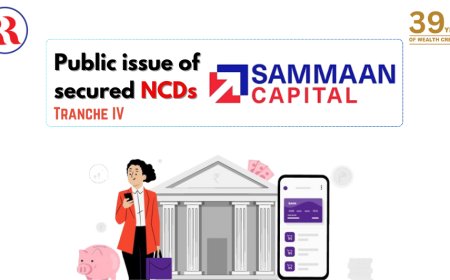Conflict Resolution Through Compassionate Dialogues
Discover how compassionate dialogues can transform conflict into understanding through empathy, active listening, and interfaith dialogue for peace.
In a world torn by division, misunderstanding, and hostility, the need for compassionate dialogues has never been greater. These conversations go beyond surface level tolerance and invite participants to deeply listen, reflect, and understand one another. Whether in family disputes or large scale geopolitical conflicts, true healing begins when individuals choose empathy over judgment. Compassionate dialogues are not just about exchanging opinions theyre about connecting across differences to find common ground. They foster safety, trust, and mutual respect, all essential ingredients in effective conflict resolution. When people feel heard and seen, the possibility for peace emerges more authentically and sustainably.
Power of Listening in Conflict Transformation
Listening is the cornerstone of any successful compassionate dialogue. Too often, people enter conversations focused on defending their position rather than understanding others. In conflict situations, this defensiveness can escalate tensions. However, when individuals feel genuinely heard, they become more open to different perspectives. Compassionate listening involves patience, presence, and a willingness to hold space for anothers truth even if it challenges your own. This form of dialogue doesnt aim to win but to build bridges. By listening deeply, we make room for emotional safety, which is essential in transforming conflict into collaboration.
Role of Interfaith Dialogue for Peace
In areas where religion has been a source of division, interfaith dialogue for peace becomes a critical tool for reconciliation. These dialogues bring together people from diverse spiritual backgrounds to explore shared values and build understanding. Compassion lies at the heart of all major religions, making it a powerful unifying principle. By engaging in compassionate dialogues grounded in mutual respect, religious communities can shift from competition to cooperation. These conversations challenge stereotypes and foster empathy. They also create opportunities for joint peacebuilding efforts that transcend theological boundaries, strengthening both community bonds and global harmony.
Compassionate Dialogues in Community Mediation
Many everyday conflicts such as neighborhood disputes, school disagreements, or workplace tensions can be resolved through compassionate dialogues. Community mediation programs often use trained facilitators to help parties communicate more effectively. These mediators guide participants through conversations that prioritize understanding, dignity, and mutual needs. Instead of assigning blame, the process encourages people to explore how theyve been affected and what they need to move forward. In this way, communities become active agents of peace, relying on connection rather than confrontation. Compassion not only de escalates conflict but also strengthens the social fabric of neighborhoods and cities.
Youth and Dialogue Driven Peacebuilding
Young people are essential to sustainable peace efforts. Schools and youth organizations that encourage compassionate dialogues create environments where future leaders learn to value empathy and cooperation. Programs that integrate peer mediation, restorative justice circles, or inclusive discussions empower youth to address conflicts constructively. These spaces give young voices the platform to be heard and the tools to resolve issues nonviolently. By equipping youth with dialogue based conflict resolution skills, we build a generation that understands the transformative power of compassion. They learn that disagreement doesnt have to lead to division it can lead to discovery and shared growth.
Digital Platforms for Dialogue and Understanding
In todays interconnected world, digital media can be a powerful tool for spreading empathy and encouraging compassionate dialogues. Online forums, video conferences, and social media campaigns can connect people across cultures and continents. However, digital conversations must be designed with intentionality. Without guidelines for respectful engagement, online spaces can quickly become breeding grounds for hate and misinformation. By creating digital communities rooted in compassion and active listening, individuals can use technology to bridge divides rather than widen them. Moderated online dialogues, digital storytelling, and virtual empathy circles can all promote peaceful engagement across differences.
Cultural Dialogue as a Peacebuilding Strategy
Cultural dialogue involves sharing stories, traditions, and practices that reflect a communitys identity and values. Through music, food, dance, and storytelling, people from different backgrounds can learn about each other in deeply human ways. These cultural exchanges become opportunities for compassionate dialogues where language barriers are softened by shared experiences. Whether its through community festivals or intercultural workshops, such events allow for healing and understanding in informal yet impactful ways. Cultural dialogue celebrates both differences and similarities, encouraging participants to connect not just as representatives of groups but as individuals with personal stories and dreams.
Role of Compassion in Political and Social Movements
Social and political movements that prioritize compassionate dialogues are more likely to maintain momentum and create lasting change. Movements grounded in mutual respect and empathy can unite diverse stakeholders, even those with conflicting interests. Activists, policymakers, and community leaders must foster open conversations that focus on shared values rather than ideological differences. Town halls, listening sessions, and truth commissions are examples of platforms where such dialogue can take place. These methods dont ignore the pain of injustice they honor it while also making room for constructive collaboration. Compassion helps transform anger into action and polarization into partnership.
Challenges and Pitfalls of Dialogue Based Conflict Resolution
While compassionate dialogues offer great promise, they are not without challenges. Power imbalances, historical grievances, and emotional trauma can make open dialogue difficult. Some individuals may be unwilling to engage, fearing judgment or re traumatization. In such cases, careful planning and skilled facilitation are crucial. Ground rules must be established to ensure safety and equality. Its also important to remember that not all conflicts can be resolved quickly. Patience and persistence are key. Even when immediate agreement is not reached, the act of engaging in dialogue plants seeds for future understanding and change.
Conclusion
In a fractured world, compassionate dialogues offer a path to healing, justice, and mutual respect. They are not a cure all, but they are a vital starting point. Whether through interfaith dialogue for peace, community mediation, or cultural exchange, these conversations allow us to meet one another as human beings first. They teach us to listen with empathy, speak with honesty, and approach conflict with courage. By committing to this form of engagement, individuals and communities alike can shift from cycles of division to cycles of understanding. Through compassion, we dont just resolve conflict we redefine what it means to live together in peace

































